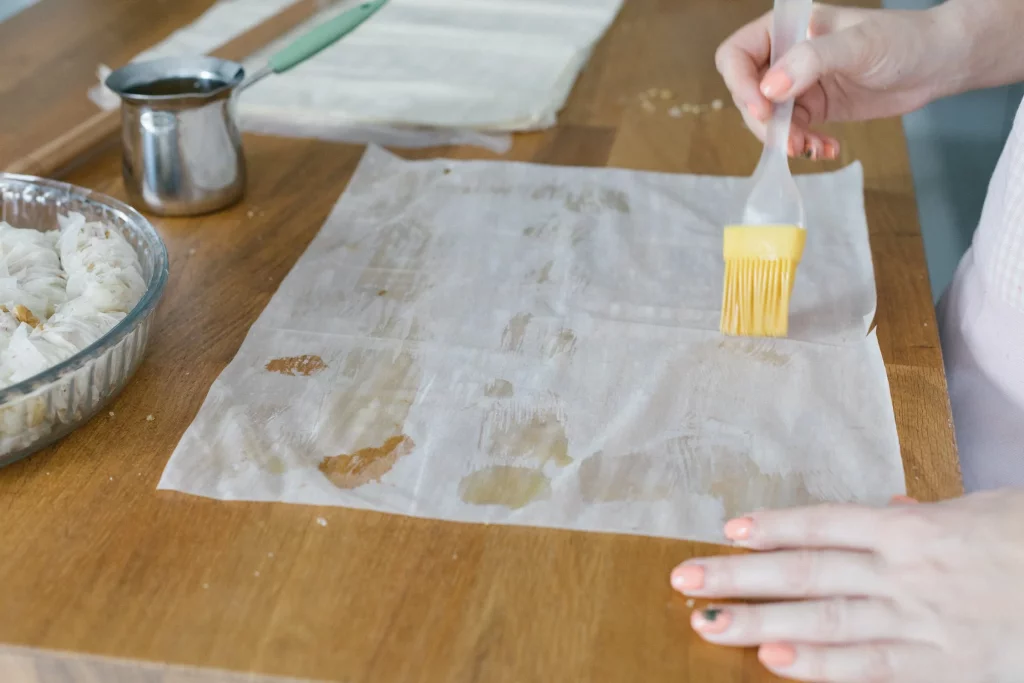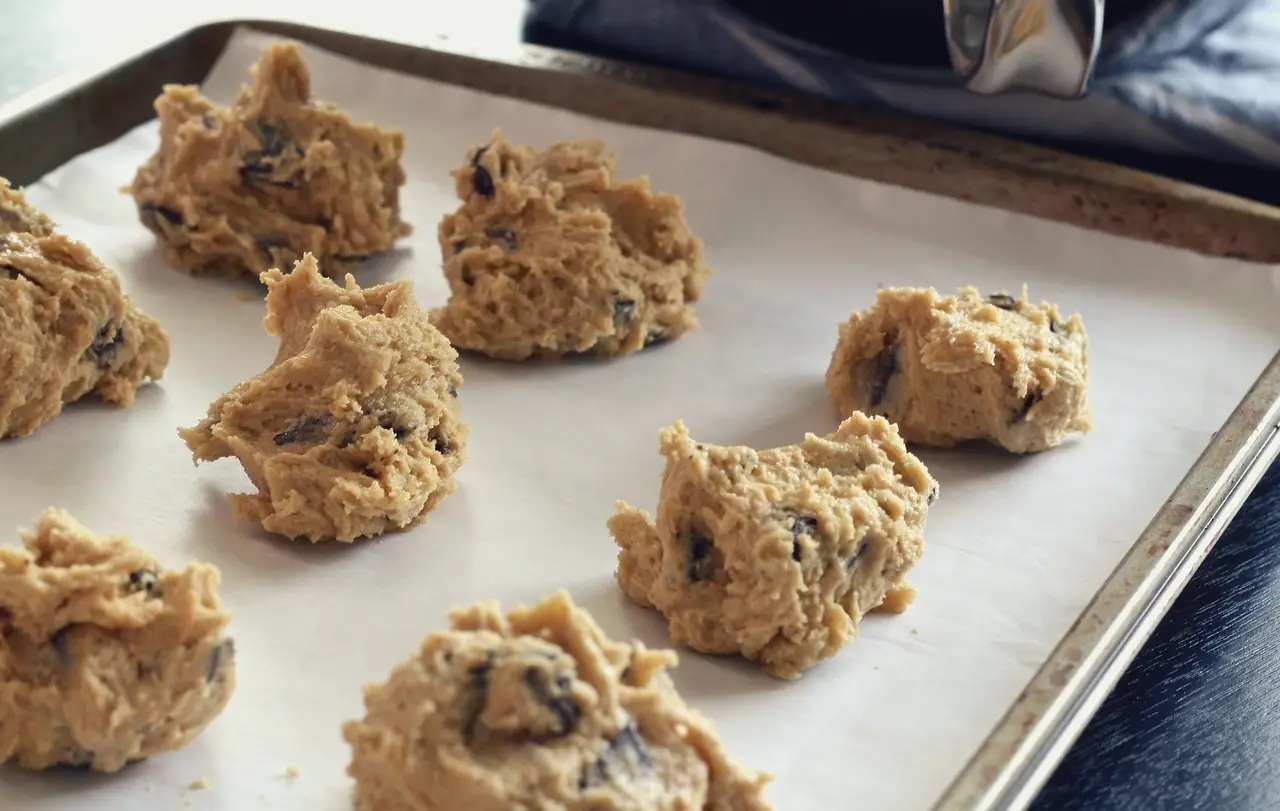Because of its carbon-rich structure, parchment paper can be added to your compost heap as brown material. However, you can compost some types of parchment paper, such as unbleached paper, while others, such as bleached paper, are not permitted.
Not only does baking paper give you evenly baked cookies without burns, but you can also transform it into fertilizer for your plants.
Still, what are the best practices for disposing of parchment paper, the most extensively used baking paper in the world, and how do you compost this paper product?
The decomposition of these paper products is covered in the following tutorial.
Table of Contents
What Exactly Is Parchment Paper?
That non-stick paper sheet that bakers use before putting cake or cookie dough on baking sheets is called parchment paper or baking paper.
These biodegradable sheets include silicon coatings that make them resistant to grease and moisture in baking and cooking activities.
Where Does Parchment Paper Originate?
The paper in these baking sheets is made from tree wood pulp.
These woody plants’ cellular fibers are gathered and processed into heat-resistant parchment papers that can endure oven temperatures of up to 450 degrees Fahrenheit.
The silicone coating is made from sand and then applied to the paper to make it nonstick.
Is it safe to use parchment paper?
Yes, without a doubt.
Before they’re sold in any store across the country, consumable parchment paper rolls must be FSC-Certified.
Certification assures that the brand selling these paper products follows the relevant health criteria during manufacturing.
As a result, any meal baked or prepared with parchment paper is safe to consume.
Nonetheless, because it is chlorine-free, unbleached parchment paper is safer than bleached paper.
Despite its safety, bleached/white parchment paper contains dioxins, which can leach into your food during high-heat cooking.
When it comes to your health, always choose the greener, unbleached choice.
Is Parchment Paper Safe for the Environment?
Totally! However, it is dependent on the type of paper used.
Unbleached parchment is entirely biodegradable, making it environmentally safe.
While the bleached paper is still biodegradable, it includes dioxins from chlorine residues and poses significant health risks to users.
What Types of Parchment Paper Can Be Composted?
There are essentially two types of parchment paper, and while both can be composted, it is best to avoid the bleached option.
Parchment Paper (Unbleached/Unwaxed)
This baking paper is dark and devoid of chlorine. It is the only variety of parchment paper that can be composted as brown material.
Parchment Paper (Bleached/White)
Bleached baking paper is chlorine-treated to give it a white and appealing appearance. While you can compost the paper product, it is not recommended due to the chemicals used to treat it.

Composting Parchment Paper
Step 1: Only use unbleached parchment paper
The only difference between bleached and unbleached parchment paper is that they both serve the same baking purpose.
The bleached option actually employs several chemicals to get the desired white appearance. While bleached parchment paper can disintegrate, toxins can interfere with composting.
Unbleached parchment paper, on the other hand, has no chlorine and can be added to your compost pile for improved results.
Step 2: Tear the paper into little pieces
Compostable materials must always be shredded into smaller bits to guarantee that they decompose into fine earth throughout the decomposition process.
Using scissors or by hand, cut your unbleached parchment paper into tiny pieces.
Step 3. Soak the Paper
Soaking your baking paper for a minute or two ensures that it decomposes quickly, even if you don’t shred it.
Wet baking parchment paper also adds moisture to your compost heap, giving the bacteria a much-needed moisture boost.
Step 4: Combine the Soaked Parchment Paper and Brown Material
You must add other carbon-rich materials to your compost heap unless you are composting only parchment paper.
Sawdust, dry leaves, wood chips, and newspaper are brown materials.
Because of the printer ink, there are numerous conflicts in adding newspaper to your compost container. Modern printers use toxic-free ink, the majority of which is soy-based and compostable.
However, avoid utilizing colored sections of newspapers because the ink in these sections is harmful.
Step 5: Include Green Materials
A balanced brown to green materials ratio is required for your compost bin.
Add nitrogen-rich products from your kitchen trash, such as coffee grounds, eggshells, peels, and tea bags, to feed the microorganisms in your compost pile.
Step 6: Incorporate Water Between the Layers
Unless your compost currently contains adequate moisture levels, you must water it. This moisture keeps your compost from being too dry and provides enough hydration to break down bacteria.
Step 6: Turn the Pile
Turning improves composting by improving aeration and ensuring the pile decomposes uniformly.
You can choose cold composting, which eliminates the turning process. However, this composting procedure is relatively slow.
Is There Recyclable Parchment Paper?
Definitely! Consider purchasing silicon-free parchment paper when looking for greener alternatives to greaseproof paper.
These silicon-free alternatives are entirely biodegradable and recyclable.
Even though the parchment paper is silicon-free, you should not reuse it because the oil and grease remain.
Is aluminum foil a better eco-friendly alternative to parchment paper in the kitchen?
Certainly not!
Aluminum foil, often known as tin foil, is a thin coating of aluminum that requires a lot of energy to produce.
Furthermore, aluminum is a mineral extracted from the Earth rather than a renewable resource, and its extraction has severe environmental repercussions. Don’t even get me started on the pollutants emitted during the raw material processing.
The average American family also disposes of around 3 pounds of tin foil in landfills each year, and while the product is recyclable, it must be discarded after heavy use.
So, what happens to the aluminum in these overflowing landfills? Because the metal is non-biodegradable, it lingers in landfills for extended periods, increasing the carbon footprint dramatically.
We are all aware of the larger picture of a significant carbon footprint: global warming.
On the other hand, baking paper is not recyclable but is made from a renewable resource: tree wood, making parchment paper biodegradable.
What Brands Are Best for Parchment Paper?
Various FSC Certified brands produce 100% biodegradable unbleached baking paper.
You may pick up these paper items from sites like Amazon, which sells pre-cut and entire baking sheets.
Some of the most trusted brands include:
- Reynolds
- If You Care
- Smarttake
- Hiware
- PaperChef
Parchment Paper vs. Wax Paper: What’s the Difference?
Wax paper, often known as butter paper, comes covered with wax, unlike parchment paper which has a silicone interior.
Wax paper is unsuitable for similar baking activities as parchment paper since intense heat melts the wax away, and a fire may occur.
Also, wax is non-biodegradable, making these paper products unsuitable for composting.
The Best Eco-Friendly Alternative for Your Oven
Parchment paper comes from the soil and readily returns to the earth like all paper goods.
If you care about the environment, you’d consider switching to parchment paper for your baking requirements and cutting out the tin foil from your kitchen.
Also, parchment paper, unlike tin foil, offers greater greaseproof and non-stick characteristics for all your cooking needs.

